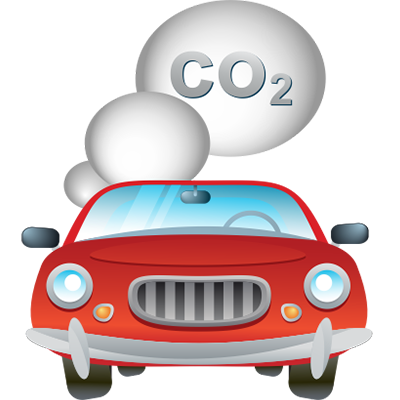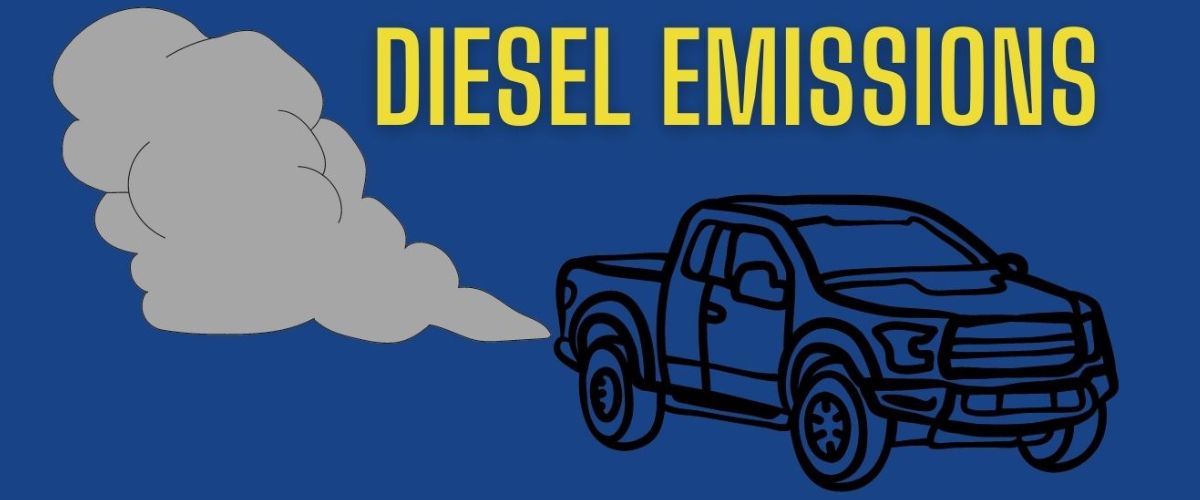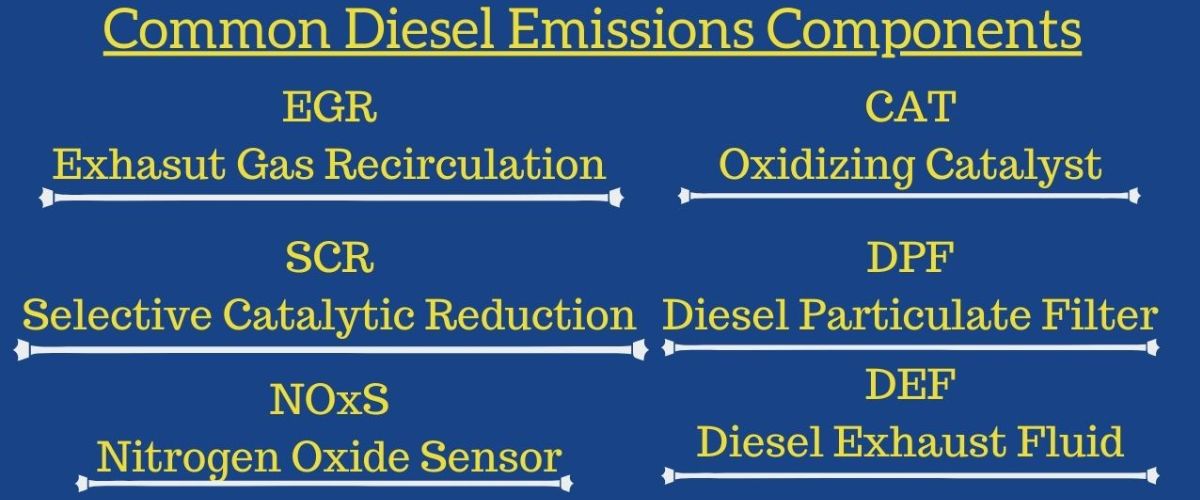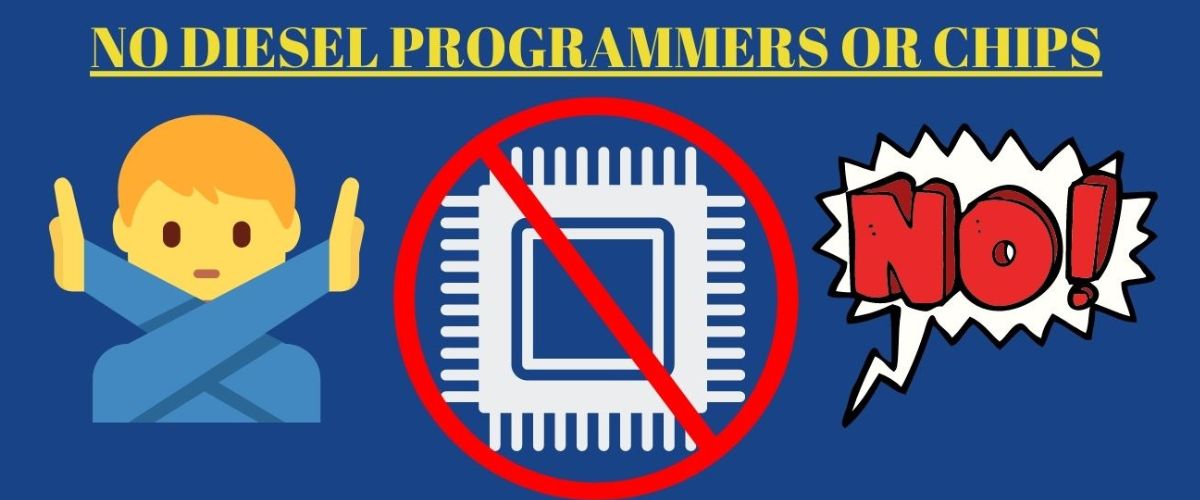Diesel & Gas Emission Testing & Registration Renewal in Utah [2023]
This article has been updated to reflect accurate information. Back when this article was originally posted diesel emissions testing was not required, in this new article you will find information for diesel emissions testing.
 It rolls around every year, just like a wedding anniversary. And just like a wedding anniversary, you can count on getting in trouble if you forget it. We’re talking about emission testing & registration renewal for your vehicle(s).
It rolls around every year, just like a wedding anniversary. And just like a wedding anniversary, you can count on getting in trouble if you forget it. We’re talking about emission testing & registration renewal for your vehicle(s).
At any given moment, there’s a heap of responsibilities on your plate, and like your son’s birthday or your daughter’s big game, let alone the day you said “I do” to the love of your life, jumping through hoops to get fresh tags on all your vehicles is an important event that just might slip your mind or get lost in the shuffle. We’re here to take some of the pressure off you as you work to keep your life (and your car) running like a well-oiled machine.
We hope you can refer back to this article as often as necessary for quick facts on keeping all the relevant legal work on your car up-to-date.
What You’ll Learn about Emissions Tests
- What happens if I’m caught without proper registration for my vehicle?
- How do I register my new car?
- How much should I expect to pay to register my car?
- What is On-the-Spot (OTS) Registration Renewal?
- All About Safety Inspections
- VIN Inspections
- The Emission Test Infographic
Call Us Now
What happens if I’m caught without proper registration for my vehicle?

First off, let’s talk penalties for those first-time vehicle owners or anyone just needing a refresher. (If you’re not a first-time driver, go ahead and scroll down. This isn’t your first rodeo.)
By the time you got your license, you’d probably seen police officers pulling people over on TV often enough that the phrase, “License and registration, please” started to sound like a cliché. But don’t take it for granted, as many new drivers do, if on the first time you’re ever pulled over in a friend or parent’s car, you manage to find that elusive piece of paper in the glove box. Someone had to go through the trouble of putting it there, and now that you have a vehicle of your own, that someone is you. Here’s what you stand to lose if proof of registration isn’t available when a police officer asks you for it.
As of May 12, 2015, driving without registration was classified in Utah as a class C misdemeanor with a minimum fine of $1,000! This fine can be reduced to $200, however, if proof of registration is given at the time of the hearing, and if the vehicle had not gone unregistered for more than a year. But why play those odds? That’s still $200 you could’ve spent on something else. Worst case scenario: you could have your car impounded.
Schedule an Appointment
How do I register my new car?

Whether you’ve just purchased your first or a new car, or you’re a new Utah resident (welcome!), making sure your vehicle is on the road legally should be at the top of your to-do list. For new residents, you have 60 days after establishing your residency to register and title your car at the DMV. If you purchase a car from a dealership, the dealer will give you a temporary registration to tide you over until the permanent one arrives by mail, but for a private sale, you’ll need to head over to the DMV as well.
Here are the typical things you’ll need to present at the DMV counter:
- The vehicle title
- Your driver’s license
- Proof of insurance
- Applicable certificates of inspection
You’ll need to be prepared to pay a registration fee as well, which will vary based on which county you live in as well as on the vehicle’s weight and year.
How much should I expect to pay to register my car?
In reference to passenger vehicles only, there is a “uniform age-based” fee that will be applied at the time of registration. The older the vehicle, the smaller the fee.

- 12 years and older: $10
- Less than 12 to 9 years old: $50
- Less than 9 to 6 years old: $80
- Less than 6 to 3 years old: $110
- Less than 3 years old: $150
This number is then added to whatever applicable weight-based fee or taxes that exist in your county. With your registration certificate, you’ll receive a sticker with the month and year to attach to your plates.
On average, we see the total registration fees range between $71 and $300.
After that, it’ll be up to you to pay the yearly renewal fees by mail, online (if eligible), or in person at the DMV in time to make sure there’s no lapse in the registration for as long as the vehicle is on the road. You should receive a renewal notice from the DMV a few weeks before the expiration date, but if you don’t, just remember that, ultimately, the state doesn’t recognize any excuse for not knowing when your car’s registration expires.
What is On-the-Spot (OTS) Registration Renewal?
Many inspection stations around Utah participate in the OTS program, which allows you to get your vehicle inspected, renew your registration, and receive your new plate decal in one visit. “On-the-Spot” means no more waiting in line at the DMV or waiting for decals to arrive in the mail. Most stations charge a minimal fee for this service. However, Dickerson Automotive currently provides this service free of charge.
What do I need to know about getting my certificates of inspection?
The possible inspections required for your vehicle may include:
- Safety Inspections
- VIN Inspections
- Emissions Inspections
Certificates for these inspections must be provided at the DMV as a prerequisite to registration, but with certain caveats for each. Here’s what you need to know:
All About Safety Inspections

Before January 1st, 2018, Utah was among 16 states that required annual safety inspections for personal passenger vehicles, but no longer. These inspections checked off the status of things like brakes, headlights, and windshields, but the legislation, passed in March of 2017, is projected to save Utah drivers as much as $25 million a year, since drivers are no longer required by law to get those things fixed in order to register their vehicles.
However, there are still certain vehicles that MUST be inspected for safety at an inspection station that’s been approved by the Department of Public Safety (DPS)*. These are:
- Salvage vehicles that need a rebuilt vehicle title
- Commercial vehicles (including buses and vans for hire)**
- Street-legal ATVs
- School buses
- Ground transportation service providers
- Vehicles with three or more axles
*The maximum fee to expect for a safety inspection is $20.
**While commercial vehicles must have a certificate of a safety inspection available for display and to show law enforcement, it’s actually not a prerequisite for registration.
VIN Inspections
Any vehicle being titled in Utah for the first time (unless it’s been acquired at an in-state dealer or manufacturer) has to have its VIN verified by a qualified agent and a Certificate of Inspection completed. Safety inspection certificates generally do the trick for cars, trucks, and motorcycles. However, all trailers, boats, off-highway vehicles, and snowmobiles require VIN or Hull Identification Number (HIN) inspections that are separate from safety and can be completed at a DMV office at no cost.
Who can sign a Certificate of Inspection?
- DMV employees, including out-of-state agents.
- Approved contractors.
- Utah (and out-of-state) peace officers.
- Licensed car dealers.
- Certified safety inspectors.

Diesel Emissions Testing:
As of January 1st 2019 Diesel emissions is now required in Utah. During research of emissions related to air quality in Utah it was found that 43% of emissions found on the roadways today are from diesel's. Older diesel vehicles did not have many emissions related components, most of them had an EGR system and a oxidizing catalyst or cat for short, and that was it. However today there are many emissions systems that have been installed on diesel vehicles in an attempt to make them run clean and help prevent excessive emissions pollution from these vehicles. Diesel emissions testing requires inspection of all components of the vehicle that were installed by the factory when it was originally made, and a full OBDII scan with an emissions analyzer. If any of these components are missing they must be replaced with brand new equipment that has been certified by the EPA. The last item that was addressed when the diesel emissions program was released was the outlaw of programmers. A diesel truck can have a monitor installed as long as it has a CARB certification card that is presented upon inspection. If CARB certification is not present or if an illegal programmer is installed, the programmer must be removed before the vehicle will receive a passing emissions certificate.

Diesel Emissions Components Explained:
- Exhaust Gas Recirculation
- EGR valves are used for many things, not only does it reduce the emissions a vehicle will put out, but it will also reduce engine temperatures. Nitrogen is a bi-product of burnt fuel and oxygen in the combustion chamber, when nitrogen is exposed to extreme temperatures it becomes reactive creating very harmful Nitrogen oxides. The EGR valve takes the harmful nitrogen oxides and recirculates them back into the combustion chamber where the nitrogen oxides are burned off. Not only does this reduce the amount of nitrogen oxide your vehicle produces it actually reduces the temperatures of the combustion chamber creating a more efficient running vehicle and reduced emissions.
- Oxidizing Catalyst
- Oxidizing Catalytic converters are an extremely important component for diesel emissions. The job of a catalytic converter is to convert Carbon Monoxide, Hydrocarbons, and Particulate Matter into Carbon Dioxide and Water. There is a small honeycomb style filter contained inside the CAT, as hot exhaust gases make contact with the filter the filter converts the harmful gasses that are produced from internal combustion into a safe non-pollutant gas.
- Selective Catalyst Reduction
- SCR is used in conjunction with the catalyst and the DEF system to further reduce harmful Nitrogen Oxides. Small ammounts of DEF are injected into the exhaust system just before reaching the catalytic converter. When this happens the DEF vaporizes into ammonia and carbon dioxide, the vaporized DEF helps reduce the ammount of nitrogen oxide in an exhasut system because the ammonia converts the nitorgen oxides into harmless nitrogen and water.
- Diesel Exhasut Fluid
- DEF works directly in conjunction with the SCR system. The fluid is made of vehicle grade ammonia and de-ionized water. When the DEF system and the SCR system work toghether they convert harmful nitrogen oxides into harmless nitrogen and water. These two systems when functioning properly have been proven to reduce emissions by up to 90%!
- Diesel Particulate Filter
- Soot is a natural product of diesel engines when diesel fuel is burned. Soot is a solid particle and can be harmful if it is allowed to exit the exhaust system without treatment first. The DPF system is designed to catch and trap the soot created until the particles can be oxidized into a harmless gas through a process called regeneration. Most diesle's will automatically regenerate the DPF system on their own, but sometimes a manual regeneration is required. During regeneration the DPF system reaches tempuratures of about 1,000 degrees fareinheight, this extreme tempurature allows the soot particles to be oxidized and then released as a harmless gas.
- Nitrogen Oxides Sensor
- NOx sensors are used to monitor the level of nitrogen oxide that is being created from the combustion chamber. These sensors work together with the SCR and DEF systems an measures how much nitrogen oxide is coming from the combustion chamber and determines how much DEF should be injected into the exhaust system to convert the harmful nitrogen oxides into harmless nitrogen.
NO PROGRAMMERS OR TUNERS ARE ALLOWED TO BE INSTALLED!

NOTE: Some programmers/monitors are allowed to be installed as long as they have CARB certification, and certification is presented at time of emissions test.
